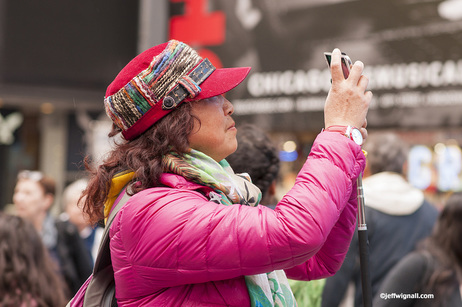Pro Photo Daily's Street Tests
Let the good times roll...much of my time the past few years has been spent writing my weekly newsletter for Pro Photo Daily called Street Tests. Though the column is now on hiatus, each week I tested and reviewed a new piece of photo gear. These reviews are a little bit offbeat, a little different than most of the "equipment tests" that you see on the web and they all reflect a bit of my warped personality, my wayward and misspent youth and my passion for photography and for music. About once a month I also interview some of the world's hottest shooters about their experiences with new and interesting photo gear. So turn up the iTunes and let the music play!
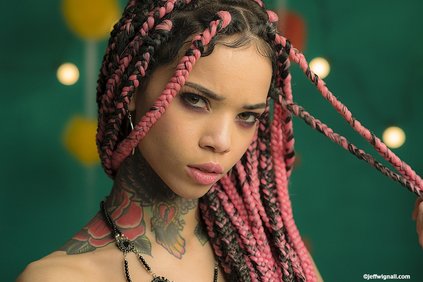
If there is anything that’s certain to turn any photographer’s head in a big way, it’s offering them the chance to photograph several great models (like the lovely woman at left) in a beautiful studio with a pair of brand new pre-release lenses. That is exactly the opportunity Sony provided in February for a small group of photographers and photo-industry writers as they introduced two brand new prime lenses: the Sony FE 100mm F2.8 STF GM OSS and the Sony FE 100mm f/2.8 at a very fun and hands-on press event in New York City. Read about my experience shooting in a high-end (7,500 square foot) studio here (or just click the photo).
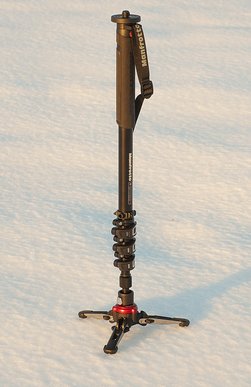
What Has One Leg and Three Feet? Why the Manfrotto XPRO monopod, of course! Before the days of image stabilization and super-high ISO settings, monopods were a fantastic thing to own because they would often buy you a precious few extra stops of shutter speed without having to haul out a tripod. And I think monopods remain an almost indispensable accessory because there are just so many situations when a tripod is entirely impractical. I have been chased out of Grand Central Terminal and Rockefeller Center for using a tripod, but when I use a monopod no one says a word. Find out why I think this may be one of the best monopods ever--and why James Brown sang a song about it! Read my complete review here (or just click the photo).
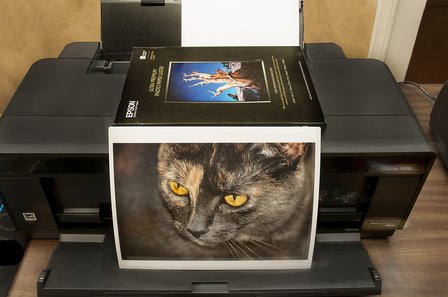
I started using Epson photo printers when digital photography was young (and so was I), cameras were considered cutting edge if they had five (yes five) megapixels, and I was writing my first digital book The Joy of Digital Photography. My first serious printer was an Epson Stylus Photo 2200 and it was one of the coolest things I’ve ever owned. The years have become a bit of a blur to me now, but I’m pretty sure that was in around 2004. That landmark printer still prints what I consider to be extraordinary-quality prints and now it’s sitting on my printer table right next to the shiny new SureColor P400 that has taken up residence in my office. Printing technology has improved in quantum leaps since i first began printing, however, and Epson’s release of the P400 (along with the P600 and P800 models) seems to me to be a continuation of Epson’s dedication to making serious, pro-level printers available at an affordable price. For about $500 this is one of the coolest wide-format photo printers around. Read my complete review of it here (or just click the photo).
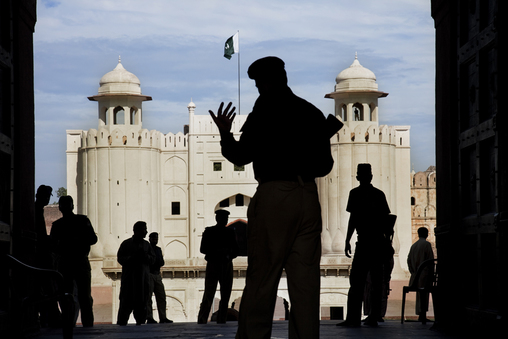
Photojournalist Ed Kashi has had a life so packed with assignments, accomplishments and adventures, that in reading about his 30-year-plus career, you kind of start to wonder how he carved out time to eat or sleep. He has, for example, produced seventeen essays for National Geographic magazine (often spending a year or more on a single essay), produced eight books of his work, and has covered topics as diverse as the impact of the oil industry in Nigeria, the protestant community in Northern Ireland, the lives of Jewish settlers in the West Bank, conflicts between the Shiites and Sunnis in Iraq, the impact of early onset Alzheimer’s, climate change, the relationship between sugar cane and Chronic Kidney Disease in Nicaragua and the plight of Syrian refugees. I recently spoke with Kashi (on the eve of a trip to France, naturally) about his long career in photojournalism and, in particular, his observations about how the iPhone and other smartphones have become a serious journalistic tool. (Photo Copyright Ed Kashi.) Read my interview with famed photojournalist Ed Kashi here.
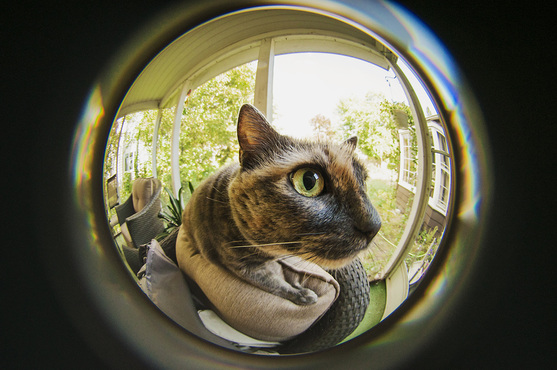
If you've never shot with a circular fisheye lens, it's an experience that you'll love. As odd as they are in some ways, lenses like the Lensbaby Circular Fisheye are also a lot of fun and they force you to look at the world in a new way. You’ll see landscapes in a way you never dreamed and you can take in scenes that go from your toes to the sky. Essentially what you are capturing in one frame is half of the world. And just how cool is that? Read my review of the Lensbaby Circular Fisheye (and see my whacky photos) here.

Rick Sammon has the kind of career that most armchair photographers would love to emulate. His career is enviable partly because he seems to travel relentlessly to some of the most fun, interesting and beautiful places on the planet—Africa, China, Antarctica, Alaska, Cuba—throw a dart at a world map and it’s likely that he’s been there. I have been a longtime admirer of Sammon’s work, his excellent how-to books books have always been a source of both solid information and great inspiration. It’s tough to flip through one of his books and not feel the pangs of wanderlust rising up. In addition to his many other accomplishments, Sammon is also a Canon Explorer of Light. I recently chatted with him about the new Canon 5D Mark IV, his recent trip to Iceland and his thoughts on making great travel photos. (Photo Copyright Rick Sammon.) Read my complete interview with Rick here, you’ll be glad you did.
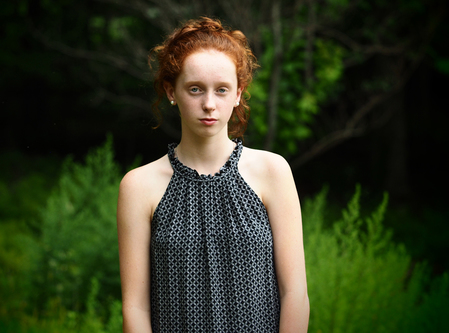
The very first time that I saw Anne Day’s photographs I was captivated by them. Here were these images of summer that were mysterious, ethereal and that seemed to capture, very beautifully, that indescribable freedom and timelessness of summer. Her pictures reminded me of every summer day I’d ever spent as a kid in Connecticut, and it was no surprise then to find out that she also lived and did much of her photography in Connecticut. Small world. Day’s career in photography includes many years a photojournalist, a large body of work in architectural photography, as well as work as a successful portrait and wedding photographer. She was an official photographer at the last four presidential inaugurations (some of her inauguration photos were featured in an exhibit at the Smithsonian Institution in Washington, D.C.). Day also works as an Olympus Visionary. Recently I had the chance to talk to Anne (this is actually my second interview with her, you can read the first one here) about what she's been shooting and she shared some of her experiences with the new Olympus Pen-F camera as well as the latest Olympus lenses. You can read my complete interview with Anne here.
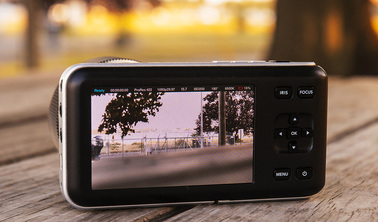
If you want to feel really old sometime, just look at the size transition that video cameras have gone through in the last 30 or 40 years. Well, come to think of it, since I can look back 30 or so years I must be getting old anyway. I clearly recall when my father opened up a CD at a local bank, probably in the late 80s, and as a gift the bank gave him a full-size shoulder-mount camcorder. Videotaping a kid’s birthday party made you look like you were covering a news event for CNN. Things shrunk down a decade or so later when Sony and others put out palm-sized camcorders. Imagine how surprised and pleased Hollywood must be then to see cameras like the diminutive Blackmagic Pocket Cinema Camera (BMPCC) come along offering full 1080 HD in a camera the size of a pack of playing cards (the body is just over five-inches wide and weighs just 12.5 ounces). I recently had the chance to test the BMPCC and even posted some of my meager test videos to Youtube (you can see one here). Read my test of the BMPCC here.
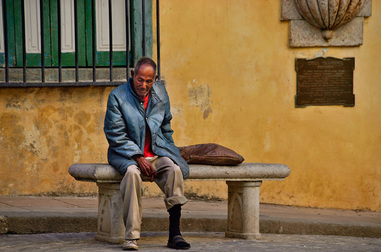
Vincent Versace is what most photographers would casually refer to as a generalist: he’s good at everything he shoots and he shoots pretty much everything. That title’s a bit too simplistic though because the reality is that Versace is actually something of an expert at everything that he photographs and the reason, he says, is because his passion is not for one particular subject but for photography. “I like taking pictures, to me it doesn’t matter what I’m photographing, I just like doing it. I want to photograph landscapes and nature and architecture and people and portraits and street photography, because it’s about mastering all of them.” His versatility and passion for all types of subjects has allowed Versace to carve a wide swath in the fine-art, commercial and editorial photo worlds. He is one of Nikon’s 16 founding Nikon Ambassadors and is a recipient of the Computerworld Smithsonian Award in Media Arts & Entertainment and the Shellenberg fine art award. In addition to being a Nikon Ambassador, Versace is also a Nikon Legend Behind the Lens. I recently had the chance to ask Versace about his recent trip to Cuba, his philosophy of travel shooting and his experiences with the new Nikon D5. (Photo Copyright Vincent Versace.) Read my interview with the very talented photographer Vincent Versace here.
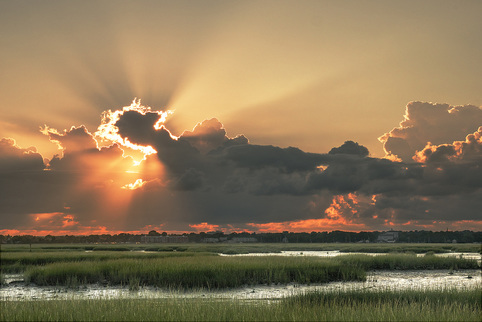
I don’t want to sound too old here, but when I first started shooting photos for a living I was using a 4x5-inch Speed Graphic—you know, the big clunky black press cameras that you see in old Humphrey Bogart movies. I didn’t choose that camera because I had a fetish for classic cameras, but because that’s what my father handed me when I told him I had landed a job shooting for a weekly newspaper. By the time I was in my late teens, of course, 35mm cameras entered my life and while you might think my load got lighter, in fact, I quickly collected so many cameras and lenses and cases of miscellaneous gear. I guess having those memories floating around in my head is why I was a bit surprised when I popped the Panasonic Lumix GX85 out of its box and found that it fit nicely in the palm of one hand. Even when I attached the Lumix GX Various 12-35mm f/2.8 ASPH lens (it’s actually sold with a 12-32mm lens, but I opted for a slightly longer and faster lens) that I used for most of my testing, it barely filled my hand. Read my review of the Lumix GX85 here.
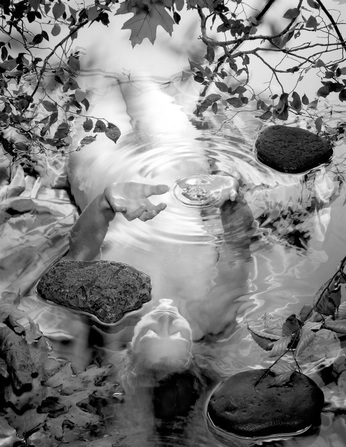
Although he has worked for many years as a commercial photographer, Brian Oglesbee is perhaps best known for his international reputation as a fine-art photographer. One of Oglesbee’s most ambitious and critically-acclaimed projects is a series of portraits of human figures shot underwater, known as the Water Series. Those images, shot in his upstate New York studio (an old dance hall built in 1867), became the subject of his critically-acclaimed book Aquatique (Insight Editions; 2007). And while they may look highly manipulated, what you see in those photographs is precisely what the camera saw—and only what the camera saw. Read my interview with Brian Oglesbee here. It was those photos that caught the interest of the art world in China and last year he was invited to have a major one-man exhibition in the city of Haining, China, as a part of a prestigious annual cultural festival. Though he could have printed the images for the show as traditional silver-gelatin prints, Oglesbee chose instead to print them digitally using an Epson Stylus Pro 7900 large-format printer. I recently had the chance to talk with him about why he made the choice to print digitally, his thoughts on digital printing and Epson printers and his recent upgrade to an Epson SureColor P9000 printer. (Photo Copyright Brian Oglesbee.) Read my interview with Brian Oglesbee here.
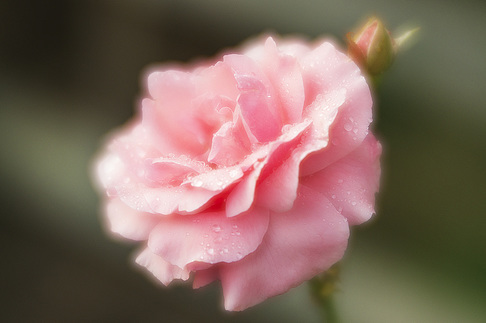
Those of you of a certain age will remember the fun of smearing a UV lens filter with petroleum to get a pretty, if somewhat unpredictable, soft-focus effect. Fortunately today we have less-messy alternatives, like the Lensbaby Velvet 56 that provides variable soft-focus effects--no petroleum jelly required. The lens is in a nice all-metal case and has a nice, heavy solid feel. And, in a way, it’s a kind of a schizophrenic (in a good way) piece of gear: it’s not only a pretty respectable normal lens (slightly longer on an ASP-C body), but it’s also a very good macro lens (with a maximum ratio of 1:2 or half life size) and yes, it’s also a soft-focus lens. More importantly, you can change the amount of diffusion by changing apertures. That’s a lot of lens in one small package. Read my review here.
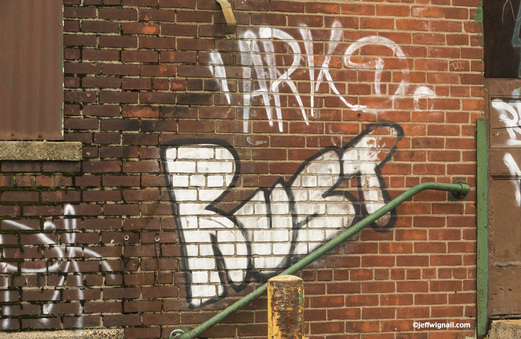
Whether they will admit it or not, I think most SLR photographers, even most pros, secretly love the idea of having one camera and one lens that will do just about everything and do it well. Imagine, for instance, going off to shoot an editorial assignment (or a family vacation, for that matter) that involves shooting everything from close-ups, to scenics, to wildlife, to architecture to action—not to mention 4K video—and packing just one camera with a built-in lens. Zowie! The convenience and fun factors are staggering. That’s why, whenever a new bridge camera with a longer, fast, sharper lens comes along, I’m ever hopeful. In this edition of Street Tests I test the very fun and versatile Sony RX10 III. Read my review here.
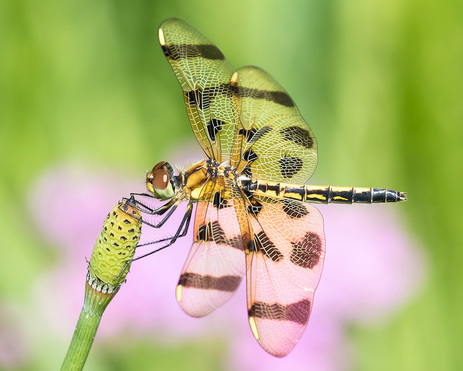
For much of his life as both photographer and naturalist, Vic Berardi has had a passion for observing and photographing one thing: raptors. Most of his spare time, in fact, has been spent almost exclusively following and photographing the hawks and other flying predators that live near (or migrate over) his Illinois home. Recently though, Berardi has begun spending more and more time photographing wild creatures flying at somewhat lower altitudes—namely the dragonflies and butterflies that populate the meadows and marshes of the midwest. Surprisingly, much of his macro work is done with the Canon 100-400 IS II USM lens--a lens that most photographers would regard largely as a wildlife lens. Why has he chosen this lens for close-up work? Read the interview and find out! Read the interview here.

Over the years I have owned several table-top (pop-up) type studios and while the basic concept is great and the diffusion really does create a nice look for small products and still life photos, they still have a few issues. For one, you still have to BYOL (bring your own lights) which means more cost and lots of wires and stands to deal with (and trip over). Another problem that has cursed the spring-loaded variety is that once you unfurl the box, there’s no getting them back down to a size you can store them in--it’s like trying to shove a defiant genie back into a lamp against his will. This is why when I first saw a press release for the Fotodiox LED Studio-in-a-Box that was touting a built-in LED lighting array, my ears (and eyes) perked up. This I had to try. So before I even took a shot at getting a manufacturer to loan me one, I went to Amazon and bought it (I got the 24x24-inch square model, $99). And I’ve been having a blast with it since the day it arrived. Read the complete review.
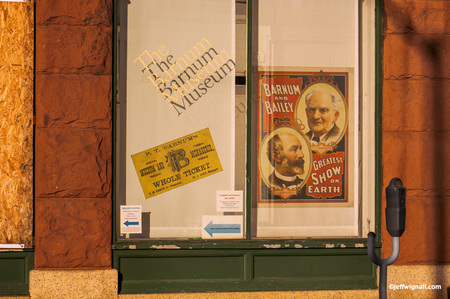
P. T. Barnum was quite an interesting guy. In his lifetime he was famous for a lot of things, probably most notably for being the world’s most flamboyant (and successful) showman and circus owner. Part of his success came from the fact that he’d say almost anything--even if it meant exaggerating a tad--to get people into his shows. But Barnum was also a polymath of the highest order and had success as a retailer, an advertising and promotion genius, an author and publisher, a philanthropist, and a museum owner. I recently paid a visit to Barnum's museum in Bridgeport, Connecticut, city of my birth, to test out the Tamron SP 85mm f/1.8 lens. Wow, was I impressed by this very sharp lens--and wait until you see his museum's astounding architecture. Read my full Street Tests review here.
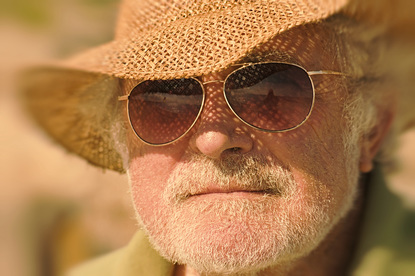
Over the past few weeks, I had the chance to experiment with Alien Skin’s Exposure X software bundle that includes not only the very fine Exposure X image editor, but Snap Art 4 creative software and Blow Up 3 for resizing your images for really big prints, as well. I've become completely addicted to both the editing and creative tools. I used the cool and very flexible "bokeh" tool to soften up the edges of this portrait of my friend (and fellow FM DJ) Johnny B Good. Quite a sweet suite! Read my Street Tests review here.
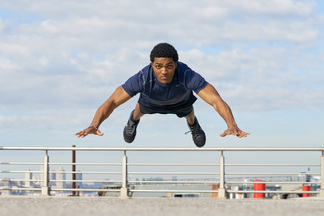
How fast is fast? When it comes to camera speed, the Sony a6300 is pretty darn fast according to New York-based lifestyle and action shooter Tony Gale. And it's not much of a surprise that when it came to testing the new camera’s ability to capture great sports moments, he would turn to athletics as a subject. After all, he’s a triathlete himself and has run in over 80 races and logged more than 1,400 event miles. How did the camera handle the action? Read my Street Tests interview with Tony here and find out! (Photo Copyright Tony Gale)
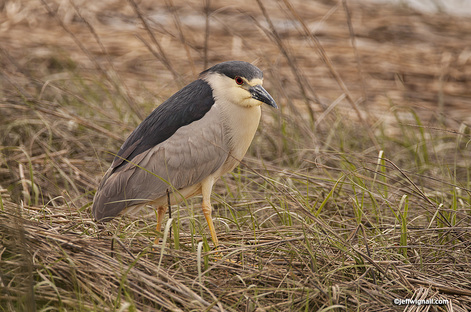
What do you do when you discover the lens you've been dreaming about your entire life? You go crazy shooting for three weeks! That's what happened to me with the amazing Sigma 150-600mm F5-6.3 DG OS HSM lens. It's a bird photographer's dream and it's the lens that this bird photographer has always hoped someone would create! Sharp? That hardly begins to describe this incredible piece of glass. Read the review here.

Sometimes testing a new piece of gear can be downright creepy, as I found out while walking through an 18th Century New England cemetery to test out the fun little Fujifilm X-T10. I had Tom Waits singing Whistlin' Past the Graveyard in my head the entire time. But I distracted myself by testing the camera's many fun settings, including the "Film Simulation" mode that lets you mimic some of your favorite films of days gone by. Start whistling' and check out this fun feature, among many others. Read the review here.

They say the neon lights are bright on Broadway...and they are...but I had a blast photographing the crush of people there with the Nikkor AF-S 85mm f/1.8G. George Benson (not to mention the Drifters) were grooving' in Times Square to test the lens. ...and I won't quit till I'm a star on Broadway! Read the review here.

Rock steady baby! Oh man, I heard Aretha Franklin in my head the whole time I was testing the Manfrotto 055 tripod with the XPRO ball head for this particular Street Tests column. What a great piece of gear. Plus! Bonus, ready Wiggy's Top Ten Reaons for Using a Tripod! I dug it the most man, especially that cool 90-degree arm. Read my review here.
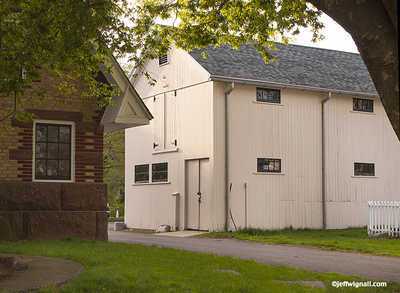
How long could I do a newsletter with an underlying musical theme without bringing up the great Sir Van Morrison? Not long! Van and his song Keep it Simple were my inspirations-in-simplicity as I tested the very elegant and simple (not to mention sharp as nails) Tamron SP 35mm f/1.8 Di VC USD lens. I took the lens to a local history park and together we came back with some fine--and very simple--images. You've got to keep it simple baby and that's just that! Read my review here.

Abba?! What, from Wiggy? Never! Hah. You never know what lurks in the mind of Wiggy. And how fortuitous that on that week that Hasselblad introduced their amazing new H6D (50 and 100MP cameras) that I would meet up with the great London photographer Tom Oldham who had just returned from a blistering test of the new Hassie in, yeah, you guessed it, Sweden--home of both the Hasselblad and Abba! I interviewed Tom about the camera and he graciously shared some of his fine new photos with the Street Tests readers. Nice guy or what? (Photo by Tom Oldham) Read my interview with Tom here.
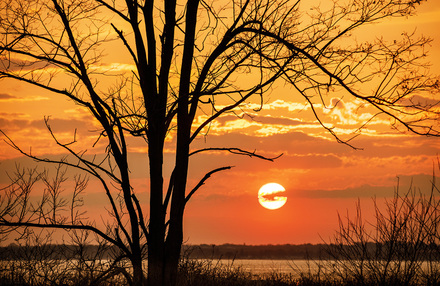
It's every photographer's dream to have an all in one lens--wide-angle to super-telephoto. And Sigma's 18-300mm 3.5-6.3 DC HSM OS takes a pretty good stab at it. I had a blast roaming around town with just one lens on my shoulder and overall the results were pretty great. And for this inaugural edition of the Street Tests newsletter, I went with an old gospel classic--can you guess which one? Yeah, you guessed! He's got the whole world in his hands....! Read my review here.
